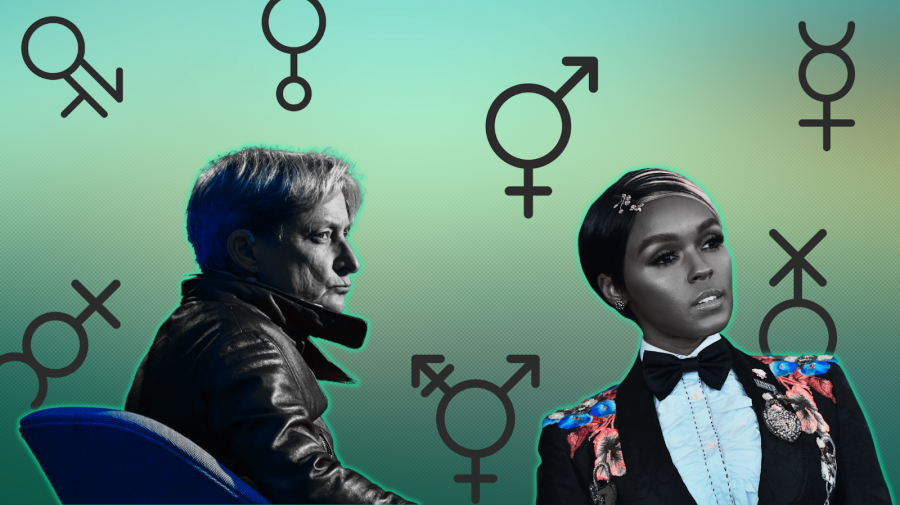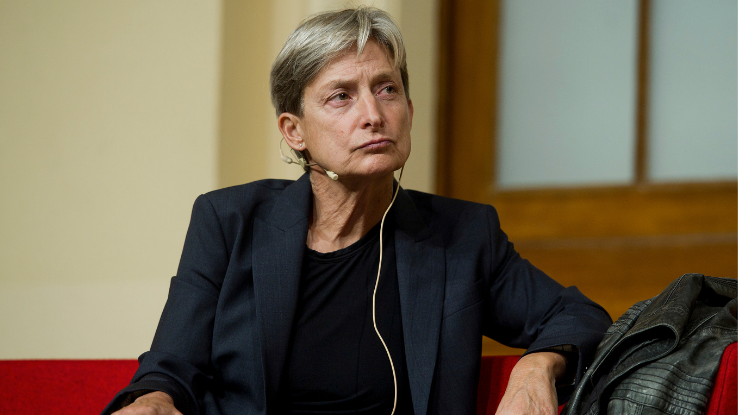
On Wednesday, April 20, 2022, musician and artist Janelle Monáe shared that they’re nonbinary. In an age where big-name stars like Monáe feel comfortable speaking more about their gender, it’s clear that our society’s cultural views on gender are changing, even if some continue to rally against the movement, and queer and trans rights as a whole. These opponents of more open and fluid discussions of (and approaches to) gender often fall back on traditional gender norms to form their arguments, believing gender and sex are connected.
But sex and gender identity are separate entities. “Sex” is a term for differentiating the biological sexes — male and female — from each other. While sex may seem like it has no gray area or spectrum, it’s important to remember that intersex people exist, blurring the lines between the male and female biological sex categorizations. “Gender identity,” however, is the term that describes your “innermost concept of self,” and you express this gender through your behaviors or the roles you perform. Often, though, gender is affected by the cultural and social constructs — a shared reality our society has built when we all just accept certain ideas as fact — we live with and within.
This brings us to gender performance theory — a framework that was spearheaded by theorist Judith Butler. As we continue to move toward a more non-binary, less rigid view of gender, it’s also clear that people want to move toward a world where we’re regarded for our similarities, respected for our differences, seen as equals and valued for what we contribute to our communities. Here, we’ll take a closer look at Butler’s groundbreaking writings on gender, and how Monáe, and other highly visible LGBTQ+ folks, are helping us understand why seeing beyond the gender binary is so important.
Gender Trouble: Judith Butler on Gender Performance
Judith Butler wrote their seminal Gender Trouble back in 1990, and, since then, the idea of “gender performance” and “performativity” have been topics of discussion. For Butler, their aim was “not to prescribe a new gendered way of life […] but to open up the field of possibility for gender.”
In Gender Trouble, the theorist explores the notion that gender is not fixed, but instead based on our cultural surroundings, or the cultural construct(s) in which we live. This is something that has been proven historically, even though white Eurocentric cultures often view gender identity in the “traditional” — fixed and binary — sense, comparing it to both sex and conventional gender norms.
Butler writes that gender is contextual, meaning that it can change based on the cultural context that a person is in. Someone can identify with different roles based on their socialization, often performing the function they feel they are supposed to fulfill in their community. Being assigned male or female at birth doesn’t determine your behavior. Instead, you learn to behave in certain ways to fit in with what society expects. For Butler, gender is a performance.

Another essential aspect to note is that gender performativity is separate from sexuality. A person’s gender doesn’t necessarily have any type of association with their sexuality. In a post-colonial world, where many cultural differences and cultures are starting to assimilate, the cultural construct is continuing to change over time.
It only makes sense that people are finding more and more that they don’t fit into prescribed gender norms — nor do they want to fit into these rigid boxes. Simply put, the gender binary is outdated. Gender expression often stems from the gender identity a person feels, rather than the biological sex they were assigned at birth. People no longer want to belong to binary categories; they identify with categories on a spectrum of gender. Still, while queer theory can seem like it revolves around a lot of categorization, the focus is not on identity politics.
“Beyond the Binary”: Identity, Sameness & Unity
If you were to ask Butler their view on identity politics, their belief is that “…identity ought not be the foundation for politics. Alliance, coalition, and solidarity are the key terms for expanding the left.” It seems that while there may be many categorizations for gender now, the overall goal for Butler and others is to accept everyone as they are and band together for progressive causes.
Seeing past identities and binaries benefits us all because it creates a space where what a person contributes to society — not in a capitalist sense, but by virtue of being who they are — is valued over their identity, or the stereotypes wrongly associated with their identity.
This value can have transformational effects on how we view all sorts of marginalized identities. If we can find unity even if we have differences, then there’s hope for a world free from stereotypes related to race, ethnicity, sexual orientation, size and gender. We can create a space of possibility and start to break down the power relations and gender norms that exist in our society, many of which still hinge on a gender gap, structurally and economically, in the United States.

“I just don’t see myself as a woman, solely, I feel all of my energy. I feel like God is so much bigger than the ‘he’ or the ‘she.’ If I am from God, I am everything,” Janelle Monáe said while talking about being nonbinary. “I am everything, but I will always, always stand with women. I will always stand with Black women. But I just see everything beyond the binary.”
In a time when we’re transcending typical gender roles, these statements are more relevant than ever. Monáe’s relation to a higher power’s lack of gender is fascinating as it enforces the idea of a gender spectrum — and love — that go beyond identity. It also seems to imply that Monáe doesn’t particularly identify with one gender role more than the other. More and more people are wondering what it would be like to live beyond the constraints of the gender binary system, which can only help us better understand ourselves and create thriving communities.
For example, what would it feel like for cis women to be seen as strong and powerful in society, and for cis men to be able to express their emotions freely and without judgment? Gender norms have constrained us. Living a life beyond the gender binary allows people to escape these traditional roles and live in ways that are true to themselves.
In art, we can see this more freeing way of living take shape. Author Jeanette Winterson’s Written on the Body, for example, is a romance novel with a narrator whose gender is ambiguous, making the book an excellent example of how one can become invested in the humanity of another, and how gender identity doesn’t need to have a bearing on our roles, actions, love or lives at large.
When we can see the humanity in everyone, we can start to break down the power structures that exist in our society and move toward a more equitable, equal and unified place. In a world where gender is fluid, we can create a world of possibility for all — a more freeing world in which actions speak louder than the way you look or how you identify.






